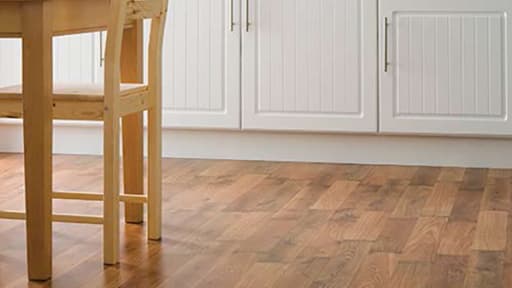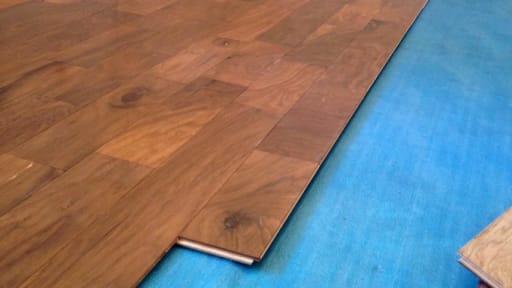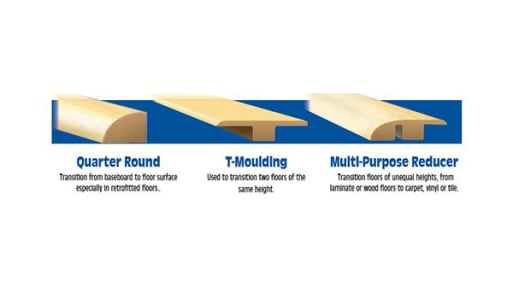Keeping Your New Laminate Floor Quiet: Three Steps for Success
Posted by D.R.G. on 7th Jun 2023

Laminate floor spares unnecessary expenses, protects its surface and offers a slew of benefits. If you’re a DIY guru, and if you’re installing long-lasting floors built to impress, you’ve probably considered noise as a factor. Installing flooring may be easy—and implementing laminate is simple when the proper steps are adhered to. However, creaky boards, unfilled gaps and laminate inconsistency can turn any new addition into a rickety, creaking mess. When implementing your floor laminate, take advantage of the following steps to ensure a quiet, consistent job:
Step 1: Secure Expansion Spaces

When laminating your floor installation, accommodate for a small expansion space, which will, when utilized near vertical surfaces and walls, reduce creaks, moans and buckling. Your floor expands and contracts, and a laminate, floating floor may fold when expansion gaps aren’t implemented. Such expansion spaces should be implemented near “fixed” areas and objects, such as the following:
Cabinets, Pipes, Hearths, Doors, Sliding glass, Vents, Steps
When implementing your expansion space, gage it between one-eighth inches and one-fourth of an inch. Depending upon your product, you may need additional space. When your expansion gaps are efficiently measured, your floor will be secured. Age, humidity, heat and high traffic all affect a floor’s overall size, and keeping expansion spaces are vital to its prolonged use, health and appearance.
Step 2: Install an Underlayment Pad

Laminate flooring can vary in thickness, and it may need additional materials to give it a better feeling underfoot. If you’re installing consistent flooring, you’d be wise to provide extra cushioning. Installing underlayment padding increases your floor’s sound absorption; it makes your home quieter.
Additionally, it increases your laminate floor’s overall “softness.” It transmits energy softly, reducing direct force while boosting your overall comfort. Laminate cushioning also provides the following benefits:
Moisture blockage, Thermal insulation, Gap reduction
Nearly all-modern laminate floor installations utilize underlayment pads, and they’ve become increasingly popular due to their all-around benefits. Again, they offer a wealth of bonuses aside from sound absorption, and they’re necessary for positively impacting your floor’s consistency and durability.
Step 3: Transition Your Flooring Between Rooms

Laminate flooring transitions ensure smooth-running, thick surfaces while drastically reducing emitted noise. Depending upon your laminate floor’s type, transitions will be needed for doorways, entryways, hallways and other areas. Primarily, when installing laminate floor through a threshold, treat such areas as objects, and lay your new flooring beneath the area’s doorjambs. This increases flat laying and consistency in relatively narrow areas. Additionally, installing a T-strip will further reduce noise, sloping pressure away from the mid area. T-strips are widely available, and they’re an excellent transition material. Containing thickness similar to carpeting, they’re incredibly effective for consistent protection and sound reduction. In fact, many consider T-strip a vital laminate floor component.
Conclusion
When installing your floor, remember to be consistent. Regardless of your chosen additions, maintaining relative uniformity greatly reduces a laminate floor’s gaps and noise-inducing areas. When installing pads and creating gaps, utilizing consistent installation methods ensure noise reduction. If you have any questions, contact one of our in-store partners for information relevant to laminate floor installation. Soon, your laminate floor will be ready—and its reduced noise will perfectly complement your household.
Ready to start your flooring project? Browse our wide selection of laminate flooring and take it home today. We guarantee the lowest price.
Not sure what to do first or which option to choose? We've got you covered.Request a free flooring estimate with one of our home improvement experts today!
About The Author
D.R.G. is an independent contractor and article writer
focusing on information-savvy approaches to various industries. With a
well-rounded approach to a wide array of topics.
The articles and other content contained on this website/blog are provided for informational purposes only and should not be relied upon for any purposes. While it is our goal to provide you with up-to-date, relevant and useful information on a wide range of topics, we make no representations or warranties of any kind, whether express or implied, concerning the reliability, suitability, completeness or accuracy of any of the information made available on this site. The articles and information contained on this site are not intended to provide legal, accounting or other professional or business advice and should not be treated as a substitute for the advice of a professional with knowledge of the facts and circumstances of your specific situation. By accessing this site, you agree that you will not seek to hold E.C. Barton & Company or any of its affiliates liable for any losses or unanticipated costs or assert any other claim based on your use of this site or on the reliance on the content contained herein.

